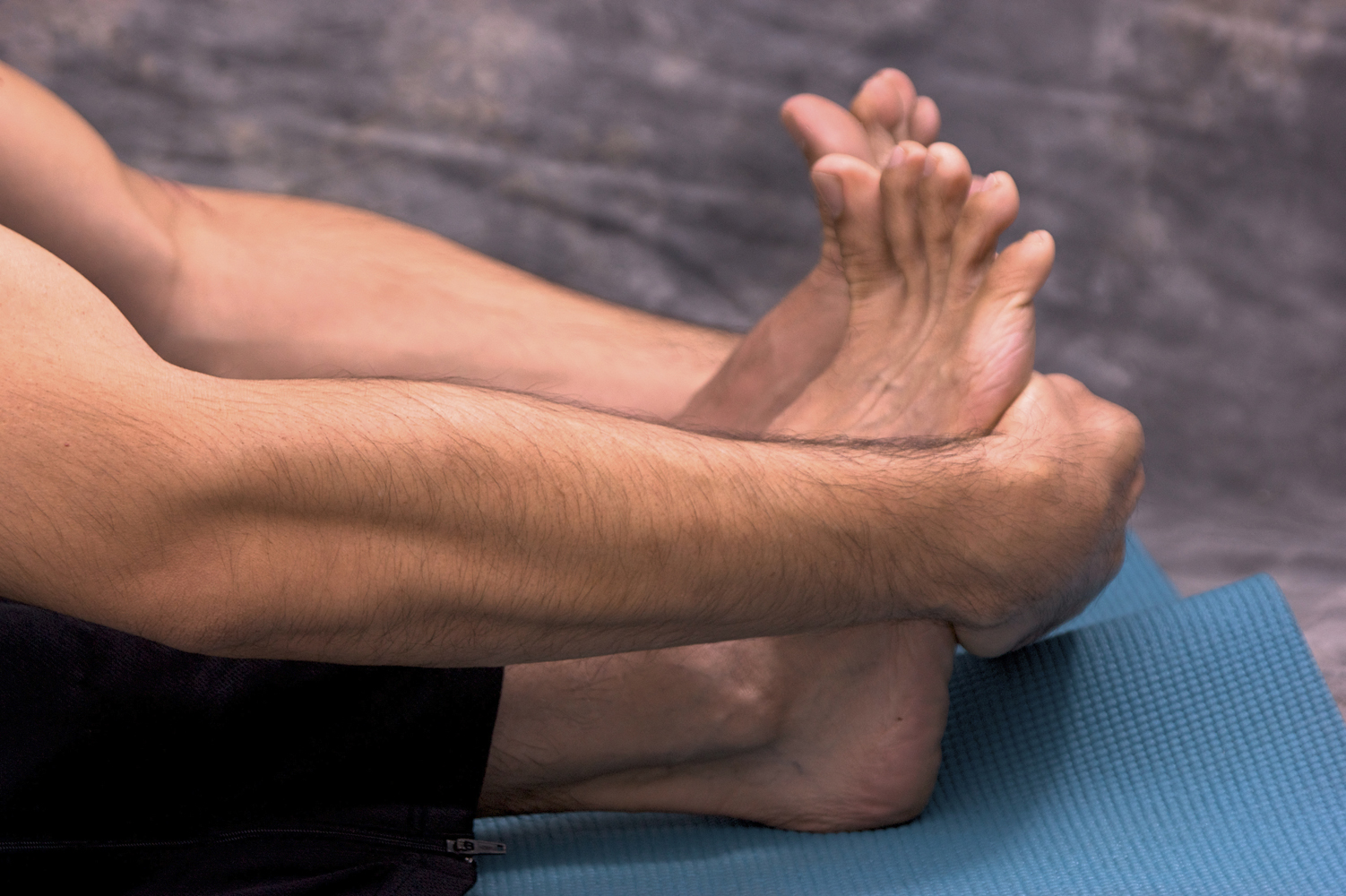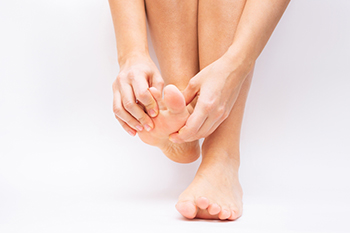Items filtered by date: March 2023
Can Falling Be Prevented?

It is common for the elderly to fall. Research shows falling is the top cause of fractures and major injuries among the elderly population, and they primarily happen at home. Effective fall prevention methods can be implemented to help to reduce falling incidents. Keeping the body strong through regular exercise and stretching routines are beneficial in preventing many falls. Additionally, it is helpful to remove worn rugs, improve lighting in the living environment, and refrain from wearing slippers or walking barefoot. The bathroom may become safer when grab bars are installed in the shower and toilet area. Health can be maintained when regular physical and eye examinations are performed. This can also help to monitor existing medications and update eyeglasses if needed. Falling can impact the feet, and If you would like to learn more about successful fall prevention techniques, please confer with a podiatrist.
Preventing falls among the elderly is very important. If you are older and have fallen or fear that you are prone to falling, consult with Priyanka Mude, DPM from North Canton Podiatry. Our doctor will assess your condition and provide you with quality advice and care.
Every 11 seconds, an elderly American is being treated in an emergency room for a fall related injury. Falls are the leading cause of head and hip injuries for those 65 and older. Due to decreases in strength, balance, senses, and lack of awareness, elderly persons are very susceptible to falling. Thankfully, there are a number of things older persons can do to prevent falls.
How to Prevent Falls
Some effective methods that older persons can do to prevent falls include:
- Enrolling in strength and balance exercise program to increase balance and strength
- Periodically having your sight and hearing checked
- Discuss any medications you have with a doctor to see if it increases the risk of falling
- Clearing the house of falling hazards and installing devices like grab bars and railings
- Utilizing a walker or cane
- Wearing shoes that provide good support and cushioning
- Talking to family members about falling and increasing awareness
Falling can be a traumatic and embarrassing experience for elderly persons; this can make them less willing to leave the house, and less willing to talk to someone about their fears of falling. Doing such things, however, will increase the likelihood of tripping or losing one’s balance. Knowing the causes of falling and how to prevent them is the best way to mitigate the risk of serious injury.
If you have any questions, please feel free to contact our office located in North Canton, Ohio . We offer the newest diagnostic and treatment technologies for all your foot care needs.
Let the Expert Treat Your Ingrown Toenails
Foam Roller Ankle Stretches

There are many different reasons why stretching the feet is an important part of one’s daily health routine. Performing stretches on the feet can improve mobility, flexibility, and resilience. This can essentially make the feet better able to manage exercise routines and physical activity. One important stretch that you might consider performing on your feet is known as a foam roller ankle stretch. This stretch can be performed in a seated position with one foot at a time being rested on a half foam roller. One then repeatedly tilts the roller upwards and downwards to feel the stretch in the feet. Perform this stretch on both feet. As a result of performing this stretch, the ankles will experience more movement and flexibility. If you are someone that is looking to strengthen their feet, it is suggested that you reach out to a podiatrist today. Podiatrists are foot specialists who can help answer any questions you might have and provide treatment.
Why Stretching Is Important for Your Feet
Stretching the feet is a great way to prevent injuries. If you have any concerns with your feet consult with Priyanka Mude, DPM from North Canton Podiatry. Our doctor will assess your condition and provide you with quality foot and ankle treatment.
Stretching the Feet
Stretching the muscles in the foot is an important part in any physical activity. Feet that are tight can lead to less flexibility and make you more prone to injury. One of the most common forms of foot pain, plantar fasciitis, can be stretched out to help ease the pain. Stretching can not only ease pain from plantar fasciitis but also prevent it as well. However, it is important to see a podiatrist first to determine if stretching is right for you. Podiatrists can also recommend other ways to stretch your feet. Once you know whether stretching is right for you, here are some excellent stretches you can do.
- Using a foam roller or any cylindrical object (a water bottle or soda can will do), roll the object under your foot back and forth. You should also exert pressure on the object. Be sure to do this to both feet for a minute. Do this exercise three times each.
- Similar to the previous exercise, take a ball, such as a tennis ball, and roll it under your foot while seated and exert pressure on it.
- Grab a resistance band or towel and take a seat. If you are using a towel, fold it length wise. Next put either one between the ball of your foot and heel and pull with both hands on each side towards you. Hold this for 15 seconds and then switch feet. Do this three times for each foot.
- Finally hold your big toe while crossing one leg over the other. Pull the toe towards you and hold for 15 seconds. Once again do this three times per foot.
It is best to go easy when first stretching your foot and work your way up. If your foot starts hurting, stop exercising to ice and rest the foot. It is advised that you then see a podiatrist for help.
If you have any questions, please feel free to contact our office located in North Canton, Ohio . We offer the newest diagnostic and treatment technologies for all your foot care needs.
What Can Cause Your Toes to Swell

Any number of conditions can cause your toes to become swollen, ranging from injury to an allergic reaction. Swelling, or edema, is generally an early warning system from your body, as it generally indicates a problem of some sort. Among the common reasons for toe edema are gout, arthritis, and diabetes. Another cause of swelling in the toes is a circulation problem known as venous insufficiency. This means blood doesn’t flow properly from the extremities to the heart. Edema in the toes also may be caused by cellulitis, a serious inflammation of the skin tissues that can result from a number of conditions. Other causes of swelling in the toes include ingrown toenails, an infection, and footwear that is too tight. Some of these conditions indicate underlying problems that may take time to be corrected, and others can be easily handled by a visit to the podiatrist. The main thing to remember is that swelling is a warning sign from your body that something is amiss. If your toe swells, it is suggested that you consult a podiatrist for an examination and a diagnosis.
Swollen feet can be a sign of an underlying condition. If you have any concerns, contact Priyanka Mude, DPM of North Canton Podiatry. Our doctor can provide the care you need to keep you pain-free and on your feet.
Swollen feet are a common ailment among pregnant women and people who stand or sit for extended periods. Aging may increase the possibility of swollen feet and patients who are obese often notice when their feet are swelling too. There may be medical reasons why swollen feet occur:
- Phlebitis - A condition that causes the veins to become inflamed and can also cause leg pain.
- Liver disease - This may lead to low blood levels of albumin which is a protein. This can cause fluid in the blood to pass into the tissues and several areas of the body can become swollen.
- Heart failure - When the heart doesn’t pump properly the blood that is normally pumped back to the heart can pool in the veins of the legs causing swollen feet.
- Kidney disease - One of the main functions of the kidneys is releasing excess fluid in the body. This type of condition can make it difficult for the kidneys to function properly, and as a result the feet may become swollen.
- Deep-vein thrombosis (DVT)- This is a serious condition where blood clots form in the veins of the legs. They can block the return of blood from the legs to the heart which may cause the feet to swell. It is important to be treated by a podiatrist if this condition is present.
Swollen feet can also be caused by bone and tendon conditions, including fractures, arthritis, and tendinitis. Additionally, there may be skin and toenail conditions and an infection may cause the feet to swell. Patients who take medicine to treat high blood pressure may be prone to getting swollen feet.
Many patients elevate their feet to help relieve the swelling and this is generally a temporary remedy. When a podiatrist is consulted the reason behind the swelling can be uncovered and subsequently treated.
If you have any questions please feel free to contact our office located in North Canton, Ohio . We offer the newest diagnostic tools and technology to treat your foot and ankle needs.
Plantar Fasciitis and Foot Rollers

Plantar fasciitis is an affliction of the foot that you might already have heard of, even if you are a novice to the field of podiatry. This is because it is one of the most common foot conditions that can cause patients heel pain or pain in the arch of the foot. It is caused by the inflammation of the plantar fascia, which runs along the sole of the foot. There are many different ways that a medical professional like a podiatrist might advise you to go about treating this condition. One technique that a podiatrist might recommend is gently rolling your foot over a foot roller, cold water bottle, or tennis ball. The point of repeatedly rolling the arch of your foot over one of these objects is to stretch and provide relief to the arch of the foot. If you are someone who is living with plantar fasciitis and you are searching for relief, it is suggested that you contact a podiatrist today for more details.
Plantar fasciitis can be very painful and inconvenient. If you are experiencing heel pain or symptoms of plantar fasciitis, contact Priyanka Mude, DPM from North Canton Podiatry. Our doctor can provide the care you need to keep you pain-free and on your feet.
What Is Plantar Fasciitis?
Plantar fasciitis is the inflammation of the thick band of tissue that runs along the bottom of your foot, known as the plantar fascia, and causes mild to severe heel pain.
What Causes Plantar Fasciitis?
- Excessive running
- Non-supportive shoes
- Overpronation
- Repeated stretching and tearing of the plantar fascia
How Can It Be Treated?
- Conservative measures – anti-inflammatories, ice packs, stretching exercises, physical therapy, orthotic devices
- Shockwave therapy – sound waves are sent to the affected area to facilitate healing and are usually used for chronic cases of plantar fasciitis
- Surgery – usually only used as a last resort when all else fails. The plantar fascia can be surgically detached from the heel
While very treatable, plantar fasciitis is definitely not something that should be ignored. Especially in severe cases, speaking to your doctor right away is highly recommended to avoid complications and severe heel pain. Your podiatrist can work with you to provide the appropriate treatment options tailored to your condition.
If you have any questions please feel free to contact our office located in North Canton, Ohio . We offer the newest diagnostic and treatment technologies for all your foot and ankle needs.

